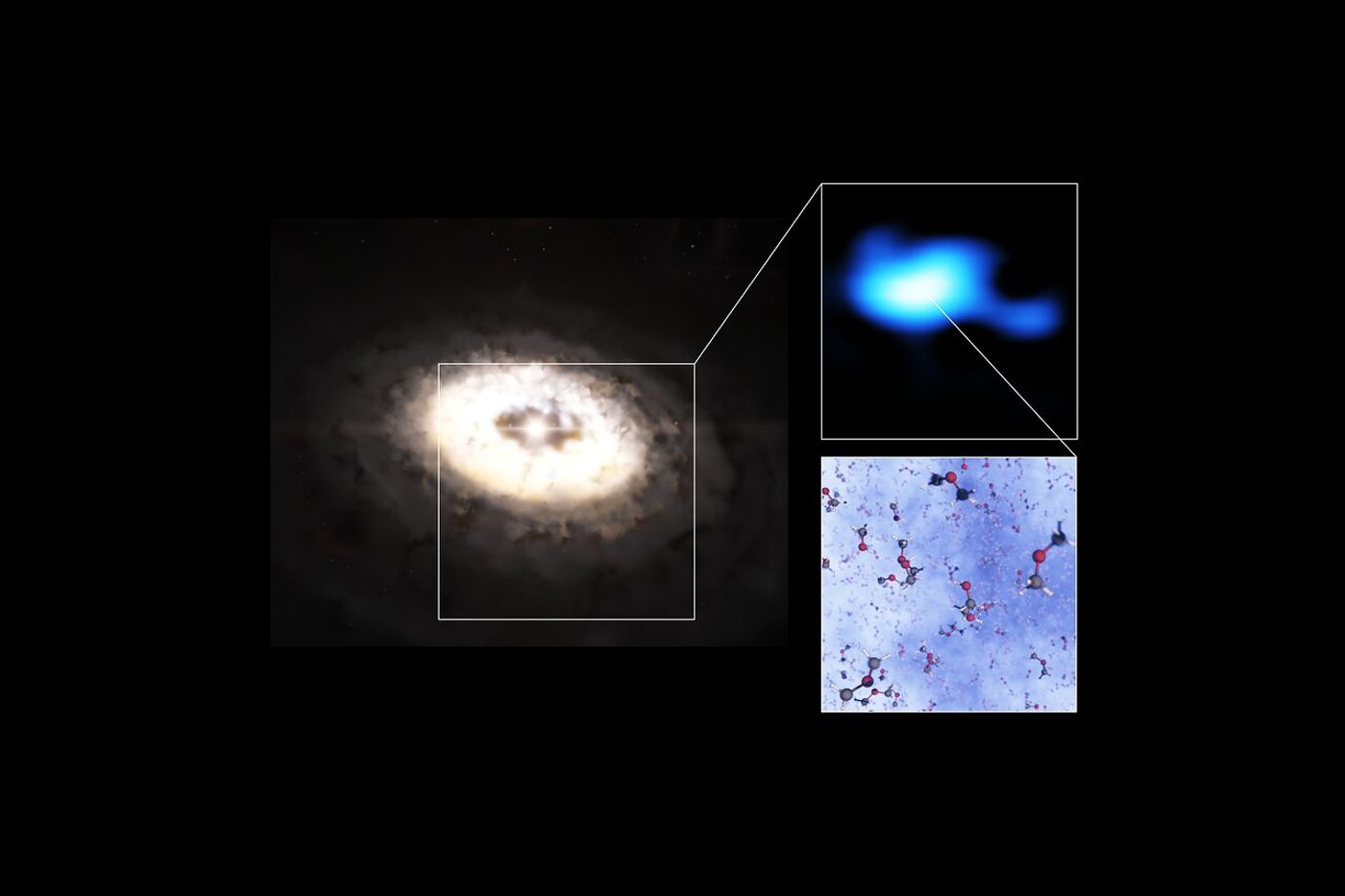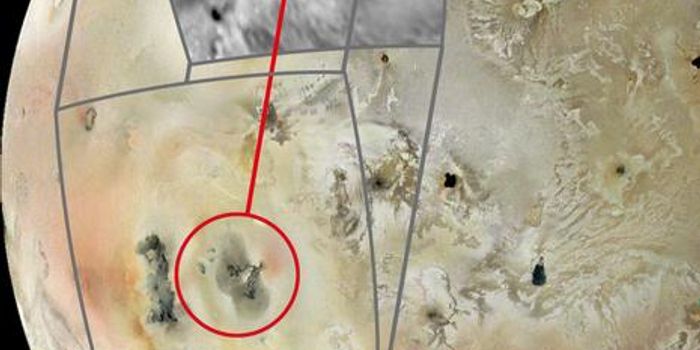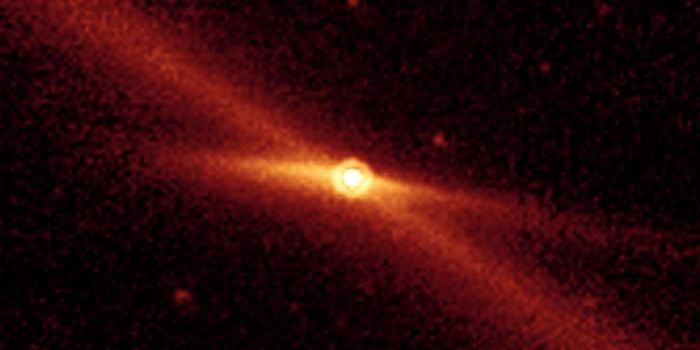Astronomers Discover Largest Molecule Yet in Planet-Forming Disc
A team of researchers at the Leiden Observatory in the Netherlands recently published the first detection of dimethyl ether in a planet-forming disc in Astronomy & Astrophysics. Dimethyl ether is the largest molecule identified in a planet-forming disc to date, being composed of nine atoms. This organic molecule is a building block of much larger organic molecules which may eventually lead to the evolution of life in this proto-planetary system. Nashanty Brunken, a Master’s student at Leiden Observatory and lead author of the study, says that observations of organic molecules in planet-forming discs can help us to learn more about the origin of life on our planet, and therefore better understand the potential for life in other planetary systems.
The team of researchers used the Atacama Large Millimeter/submillimeter Array (ALMA) in Chile to obtain observations of dimethyl ether. ALMA is a radio telescope, observing light with wavelengths of 0.32 to 3.6 mm, and is comprised of 66 antennas, which act together as a single telescope, also known as an interferometer. The goal of ALMA is to study star formation, molecular clouds, and the early Universe to better understand our cosmic origins.

Dimethyl ether was discovered in the planet-forming disc around the young star IRS 48, also known as Oph-IRS 48, located 444 light years (or 2.61 quadrillion miles away) in the direction of the constellation Ophiuchus. The organic molecule has been commonly observed in star-forming clouds, but had yet to be observed in a planet-forming disc. The team also made a tentative detection of methyl formate, a complex molecule similar to dimethyl ether and also a building block for large organic molecules. Many complex organic molecules are believed to be formed in star-forming clouds, even before stars are born. These environments are extremely cold (~20-100 K), which allows atoms and simple molecules to stick to the surface of dust grains, forming a layer of ice. On this layer of ice, molecules can migrate and chemical reactions occur, which produce more complex molecules on the surface of these dust grains.
Oph-IRS 48 has been extensively studied because its disc contains an asymmetric region called a “dust trap.” This region was likely formed as a result of a newly born planet or a small companion star between IRS 48 and the dust trap, trapping large numbers of millimeter-sized dust grains, which can come together to grow into kilometer-sized objects such as comets, asteroids, and even planets. This dust trap also serves as an ice reservoir, where dust grains with ice rich in complex molecules exist in plentiful numbers. It was in this region of the disc where the signatures of dimethyl ether were detected. Radiation from central star IRS 48 heats the molecules, sublimating the ice into gas, such that the molecules formerly trapped in ice are freed and become detectable by ALMA. These organic molecules are the precursor compounds of prebiotic molecules (e.g., amino acids, sugars), the basic building blocks of life. The study of the formation and evolution of these molecules can help astronomers better understand the origin of prebiotic molecules, and ultimately life, on planets, including our own.








